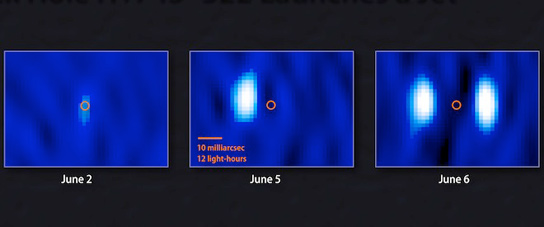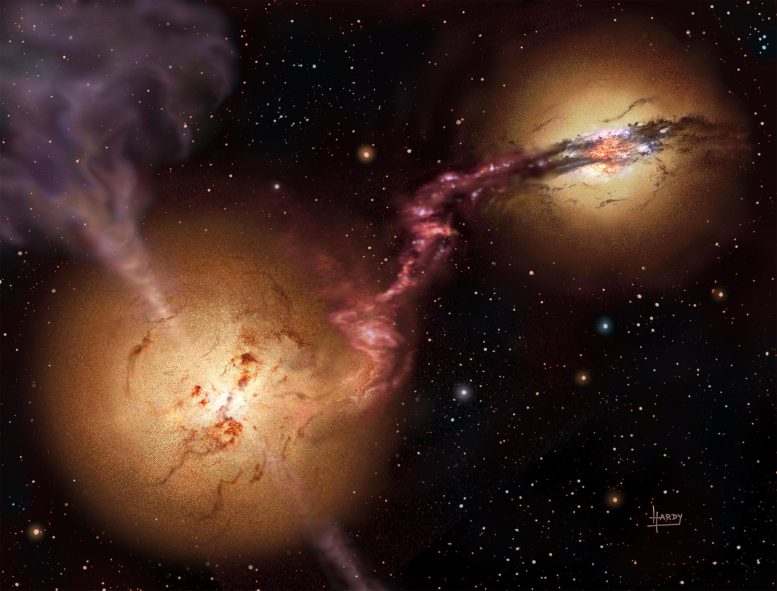Using the Very Large Baseline Array, astronomers have managed to capture an image of a black hole firing two gigantic pockets of ionized gas at almost a quarter the speed of light. The resulting cosmic explosion produces as much energy in an hour as our sun emits in five years.
The Very Large Baseline Array is a set of 10 radio telescopes that spans 5,000 miles from Mauna Kea in Hawaii to St. Croix in the U.S. Virgin Islands. It provides astronomers with the sharpest vision of any telescope on Earth or in space. The black hole in question has been designated H1742-322 and it is situated near the center of our galaxy, approximately 28,000 light years from Earth in the constellation Scorpius.

Gregory Sivakoff from the University of Alberta states that if our eyes were as sharp as the VLBA, we would be able to see a person on the moon. The findings were presented on January 10th of this year at a meeting of the American Astronomical Society.
A Sol-like star orbits H1743 and the black hole will periodically siphon matter from its companion. The gas and dust are incorporated into a large disk, which slowly spirals around the black hole’s event horizon. Researchers haven’t discovered yet how the process works exactly, but the disk constantly emits large jets of plasma, which spew out in opposite directions. Occasionally, these jets recede and are followed by an enormous bullet-like burst of gases.
Sivakoff and his team detected a lump of material, which they hypothesized as being a blob of ionized gas, spiraling its way into the black hole’s center. These blobs are known as quasi-periodic oscillations, which disappeared before the jets waned. A few days later, the team detected the ejection of gases.










Dear Sirs, I belelieve that the age of the galaxy is many/many times older than the one currently held 14 billion. I also beleive that black holes have a limit as to how much energy/mass they can sustain and after they reach a certain size we have a BIG BANG in a local area of space RELATIVELY speaking.